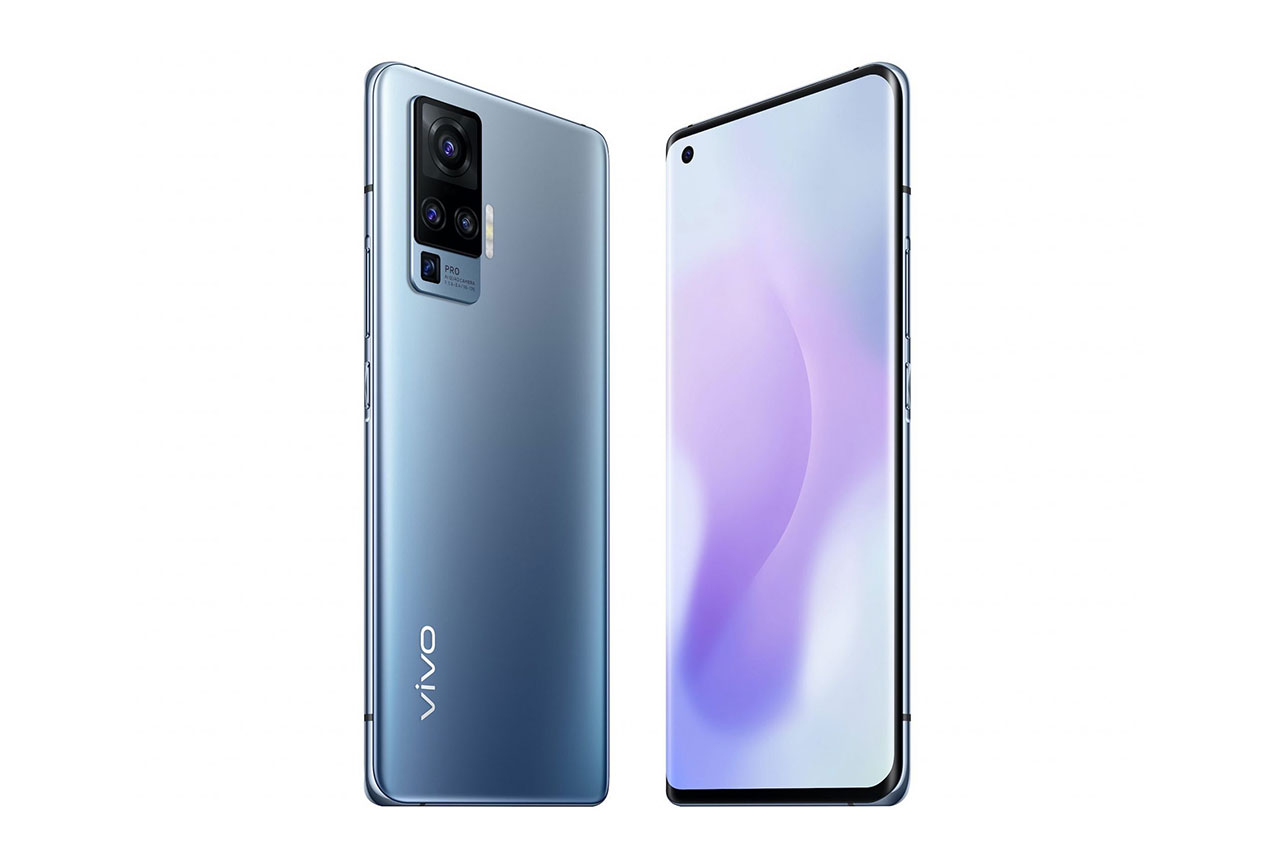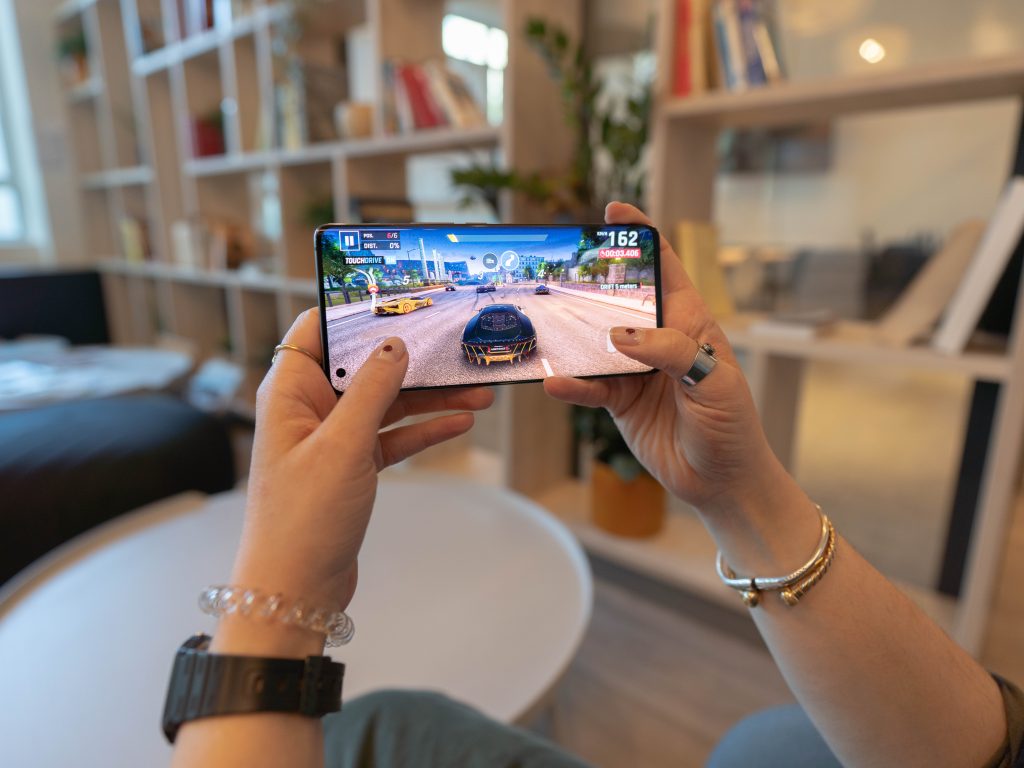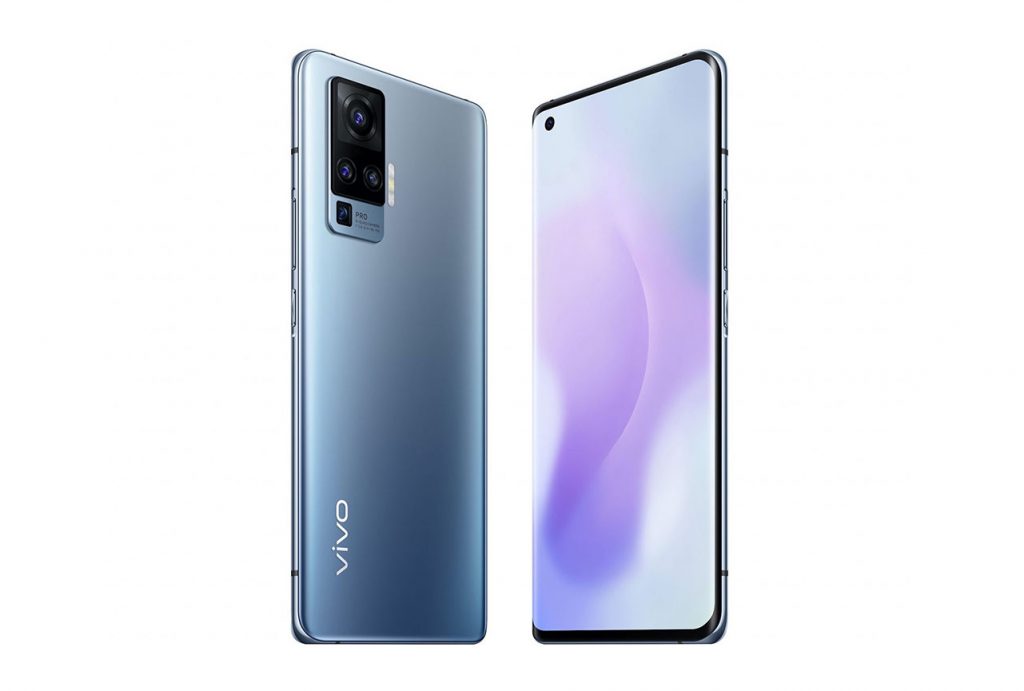Vivo introduced its X51 5G model in October 2020 to the European market at a launch price that puts it at the very top end of our Premium ($600-$799) segment. The phone comes with a 33W charger in the box to power up its 4315 mAh battery, which in turn supplies a number of premium features, including a quad-camera setup with a 48 MP main camera.
We recently put the Vivo X51 5G through our comprehensive Battery protocol tests and will present its most important results here.
Key specifications:
- Battery capacity: 4315 mAh
- 33W charger included
- 6.56-inch, 1080 x 2376, 90 Hz AMOLED display
- Qualcomm Snapdragon 765G (7nm) chipset, 5G
- Tested ROM / RAM combination: 256 GB + 8 GB
About DXOMARK Battery tests: For scoring and analysis in our smartphone battery reviews, DXOMARK engineers perform a variety of objective tests over a week-long period both indoors and outdoors. This article highlights the most important results of our testing. (See our introductory and how we test articles for more details about our smartphone Battery protocol.)
Test summary
Scoring
Sub-scores and attributes included in the calculations of the global score.

Vivo X51 5G


Key performances
These key points are derived from the lab measurements during testing and do not figure into the overall score. The lab measurements, however, are used for the overall score.
 175th
175th
 35th
35th
Pros
- Reaches an 80% charge in just over 40 minutes
- Good 5-minute quick boost charging
- Good autonomy when gaming
Cons
- Worst autonomy in database to date (May 2021)
- Power management at night could be improved
The Vivo X51 5G’s overall Battery score of 60 is largely attributable to its last-place showing for autonomy among all devices we have tested thus far, regardless of segment, as it provides only a bit under 38 hours of battery life with moderate use. It does compensate for that score somewhat by turning in an above-average charging performance.
We compared the Vivo X51 5G’s performance in several key categories with another premium device, the Google Pixel 5, and with a device from our high-end segment, the Oppo Find X3 Lite; battery capacity, charger, display type and resolution, and processor specifications for all three devices are shown in the table below.
|
Vivo X51 5G |
Google Pixel 5 |
Oppo Find X3 Lite |
|
| Battery (mAh) |
4315 |
4080 |
4300 |
| Charger (W) |
33W |
18W |
65W |
| Display type |
AMOLED |
OLED |
AMOLED |
| Resolution |
1080 x 2376 |
1080 x 2340 |
1080 x 2400 |
| Processor |
Qualcomm Snapdragon 765G (7nm) |
Qualcomm Snapdragon 765G (7nm) |
Qualcomm Snapdragon 765G (7nm) |
Autonomy (45)
How long a battery charge lasts depends not only on battery capacity but also on other aspects of the phone’s hardware and software. The DXOMARK Battery autonomy score is composed of three performance sub-scores: (1) Stationary, (2) On the go, and (3) Calibrated use cases. Each sub-score comprises the results of a comprehensive range of tests for measuring autonomy in all kinds of real-life scenarios.
With a score of 45, the Vivo X51 5G is in the bottom slot for autonomy among smartphones tested thus far. Let’s take a look at why that is by going deeper into the details.

Stationary
Vivo X51 5G
44
104
A robot housed in a Faraday cage performs a set of touch-based user actions during what we call our “typical usage scenario” (TUS) — making calls, video streaming, etc. — 4 hours of active use over the course of a 16-hour period, plus 8 hours of “sleep.” The robot repeats this set of actions every day until the device runs out of power.
Even though its 4315 mAh battery is not the smallest among the three phones compared in this review (the Google Pixel 5’s battery is only 4080 mAh), the Vivo X51 5G nonetheless came in last in our Stationary tests, scoring 5 fewer points than the next-to-last device, in large part due to its high consumption of power during nighttime hours.

On the go
Vivo X51 5G
49
96
Using a smartphone on the go takes a toll on autonomy because of extra “hidden” demands, such as the continuous signaling associated with cellphone network selection, for example. DXOMARK Battery experts take the phone outside and perform a precisely defined set of activities while following the same three-hour travel itinerary for each device.
As with our Stationary tests, the Vivo X51 5G came in last in our on-the-go testing. One bright spot is that the Vivo had the best performance when making phone calls, but it stumbled in all the other use cases (camera, GPS, social apps), with a particularly poor performance for GPS among the three devices compared here.

Calibrated
Vivo X51 5G
55
100
For this series of tests, the smartphone returns to the Faraday cage and our robots repeatedly perform actions linked to one specific use case (such as gaming, video streaming, etc.) at a time. Starting from an 80% charge, all devices are tested until they have expended at least 5% of their battery power.

The Vivo X51 5G did a little bit better overall in our calibrated use case tests, and although it’s still close to the bottom across our database, its performance was comparable to that of the Pixel 5 and the Find X3 Lite. Among the three devices, the Vivo took top honors for gaming, with an hour more of autonomy than the Oppo device and three hours more autonomy than the Google.
Charging (80)
The DXOMARK Battery charging score is composed of two sub-scores, Full charge and Quick boost. Full charge tests assess the reliability of the battery power gauge; measure how long it takes to charge a battery from 0% to 80% capacity and from 80% to 100%; and measure how long and how much power the battery takes to go from an indicated 100% to an actual full charge. With the phone at different charge levels (20%, 40%, 60%, 80%), Quick boost tests measure the amount of charge the battery receives after being plugged in for 5 minutes.
Our engineers found that the Vivo X51 5G’s 33W charger drew only 30W of power (at best) from the wall outlet; that said, this is actually a somewhat better result than for most of the chargers we have tested in our database thus far.

Full charge
Vivo X51 5G
79
121
The Vivo achieved an above-average overall score for charging, taking only 41 minutes to reach an 80% charge, which is a good performance (and one that soundly beats the Google Pixel 5’s), although the Oppo Find X3 Lite with its 65W charger gets to that same charge level in under 30 minutes.
Of note is that while it takes the Vivo right around 20 minutes to go from 80 to 100%, it takes only 2.5 minutes to go from 100% (per UI) to completely full, which means that its battery indicator is very accurate.

Quick boost
Vivo X51 5G
77
111
Coming in second among the three devices in our quick boost tests, the Vivo X51 5G provides just under 4 hours of autonomy when plugged in for 5 minutes with 20%, 40%, and 60% power remaining; when plugged in at 80%, it gains a bit under 3 hours.
| Vivo X51 5G | Google Pixel 5 | Oppo Find X3 Lite | ||
| Autonomy boost (hh:mm) | 20% | 3:47 | 2:16 | 5:56 |
| 40% | 3:52 | 2:16 | 5:27 | |
| 60% | 3:54 | 1:46 | 3:33 | |
| 80% | 2:51 | 1:13 | 3:05 | |
| Percentage boost | 20% | 11.6 % | 6.9 % | 18.9 % |
| 40% | 11.9 % | 6.9 % | 17.4 % | |
| 60% | 11.9 % | 5.4 % | 11.3 % | |
| 80% | 8.7 % | 3.7 % | 9.8 % | |
| Energy consumed | 20% | 2473 mWh | 1654 mWh | 3983 mWh |
| 40% | 2534 mWh | 1656 mWh | 3668 mWh | |
| 60% | 2551 mWh | 1294 mWh | 2384 mWh | |
| 80% | 1866 mWh | 894 mWh | 2069 mWh |
The Vivo X51 5G beat even the Oppo Find X3 Lite for the speed at which it gained 1% power, coming in at 21 seconds vs. the Oppo’s 24 seconds (leaving the Google Pixel 5 to trail behind at 42 seconds).
Efficiency (68)
Our Efficiency score comprises two sub-scores, Charge up and Discharge. Charge up is the efficiency of a full charge (how much energy is drained from the wall outlet vs the energy capacity of the battery, as well as the efficiency of the charger and its residual consumption). Discharge is how much current the smartphone drains from the battery when in use (the ratio of battery capacity over autonomy). Better autonomy with a smaller battery means better efficiency.

Charge up
Vivo X51 5G
74
105
The Vivo X51 5G’s entire charging system (which includes not just the charger but also internal smartphone circuits) achieves 78% nominal efficiency for a full charge, which is above average and thus quite acceptable.

Discharge
Vivo X51 5G
67
121
The Vivo X51 5G’s overall power discharge rate during active hours is well controlled; where it struggles is with excessive power consumption in the course of a typical night.
Conclusion
The Vivo X51 5G turned in a generally disappointing performance in terms of autonomy, providing fewer hours of active use than its competitors in this review and across the database as a whole. That said, it did quite well in our gaming use case; further, it did better in terms of daytime efficiency, although its high power consumption at night is a bit concerning. Its charging performance was above average, and gamers will be pleased with its 21-second speed for achieving a 1% power boost — one of the very best times among all tested devices.



DXOMARK encourages its readers to share comments on the articles. To read or post comments, Disqus cookies are required. Change your Cookies Preferences and read more about our Comment Policy.